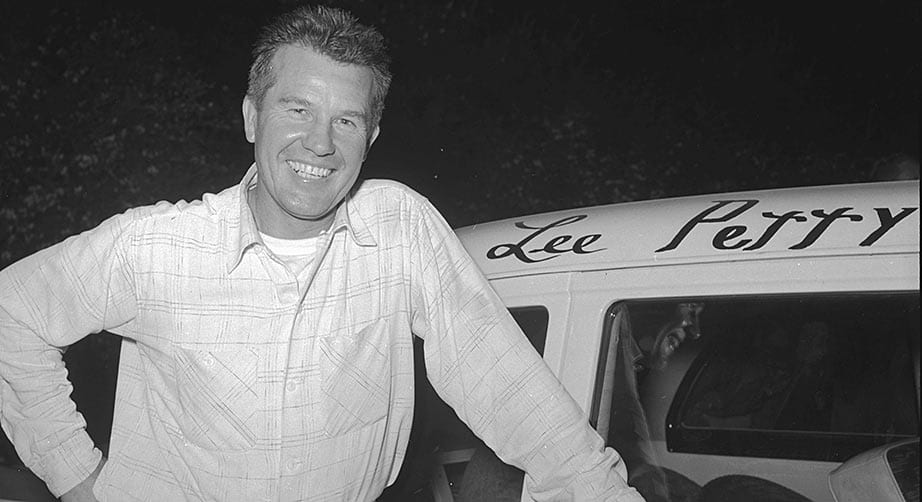Editor’s note: This article was initially published Jan. 14, 2020.
Members of the stock-car racing community converge this week at one of sprint-car racing’s crown jewels — the Chili Bowl Nationals in Tulsa, Oklahoma.
Nearly 66 years ago, NASCAR brought its top series to Oklahoma for a two-night road trip. The pair of races were so luckless that Hall of Famer Lee Petty flagged the second one to a stop himself. The sanctioning body never came back.
Those two star-crossed events from the 1956 season remain the premier series’ lone visit to the Sooner State, a relic from a long-ago time when stock-car racing was just starting to venture west of the Mississippi.
NASCAR had tried its hand in Oklahoma earlier that year with the former Convertible Division, which ran from 1956-59. Frank Mundy won the first stop on June 2, 1956 at the Tulsa Fairgrounds, which sits adjacent to the Tulsa Expo Center that hosts the Chili Bowl Nationals today. Six days after the ragtop series’ debut in the state, Allen Adkins prevailed at Taft Stadium’s quarter-mile layout in Oklahoma City.
Both convertible events were moderate successes, with 20-car fields for the fledgling series. The Grand National tour (now called the NASCAR Cup Series) was due to arrive two months later with a pair of 200-lap, 100-mile races scheduled in the same cities.
RELATED: 1956 Grand National schedule, results
Ray Lavely, who promoted racing at the Taft track, did the same for the Friday, Aug. 3 Grand National event at the Oklahoma State Fairgrounds half-mile in Oklahoma City. Jack Zink, best known as an owner of winning cars in the Indianapolis 500, promoted the Tulsa Fairgrounds race set for the next day. Zink also entered both races.
Promotions and previews had forecast entry lists teeming with nearly 30 cars for both events, which each ended up drawing healthy crowds near 6,000 spectators. But travel for the competitors to the Great Plains proved difficult. The Oklahoma City opener started just 12 entries with seven cars running at the finish. Jim Paschal scored his only win of the season in the Friday night event, taking the lead for keeps when Petty’s rear differential failed just seven laps from the finish.
MORE: 1956 Oklahoma City race results
Petty played a prominent role in the outcome of the series’ visit to Tulsa the next day. Speedy Thompson started from the pole for the second straight race, but conditions deteriorated shortly after the start. An overly dusty track combined with dim lighting made for hazardous racing, and five of the 13 starters retired in the first 30 laps.
Moments later, according an Associated Press account of the race, Petty screeched to a halt near the start-finish line and quit on the spot. He exited his No. 42 Dodge and grabbed a flag to wave the other drivers off the track, ending the race with just 34 of a scheduled 200 laps complete. The event was suspended, never restarted and did not count toward the series’ statistics. Although record-keeping from the era is spotty, it’s believed to be the only instance of a race starting and ending before becoming official in series history.
MORE: 1956 Tulsa race report
According to the AP, the protest nearly touched off a riot by the spectators, who milled about until refunds were issued. Zink’s luck on the track that weekend was as unfortunate as his promotion’s fate. He finished last in Oklahoma City, retiring with overheating issues after 10 laps, then crashed out of the Tulsa race after just 17 laps to take 11th place in the 13-car field.
Some of NASCAR’s best hope to leave a more positive memory in Tulsa this week, grabbing only the checkered flag and not the red.
